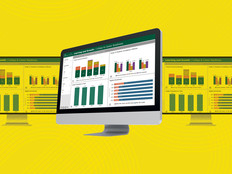School Districts: There's No More Microsoft SQL Server 2005 Support
Microsoft has been beating the drum about the end of SQL Server 2005 for a while, and now the date is nearly here: April 12. The deadline for the end of extended support has large implications for many organizations.
After April 12, those running SQL Server 2005 database software will no longer get security updates and patches. Additionally, the system won’t be covered under the per-incident paid support program Microsoft offers during extended support. Many organizations still rely on SQL Server 2005, but running it beyond its end-of-support date is risky.
Without updates and patches, users won’t be protected against new security threats. They may also face issues meeting regulatory security requirements.
"If the regulatory bodies your organization answers to allow data in the public cloud, and if you have a stable Internet connection to support traffic (or the budget to set up a dedicated connection to the cloud), it’s well worth taking a look at any of the major cloud services. The cloud offers significant advantages over hosting your SQL servers on-premises," Adam Bertram, a Microsoft systems administrator, in a recent EdTech article.
The Scope of the Issue
How big of an issue is the end-of-support deadline? Research firm IDC estimates that around 800,000 servers globally are still running Microsoft SQL Server 2005.
Upgrading to newer versions of SQL Server can be daunting, but IT departments can either handle the migration themselves or work with an outside database services provider.
Microsoft says the benefits of upgrading to SQL Server 2014, Azure SQL Database, or a combination, are well worth the expense and challenges of migration. In addition to increased security protections, Microsoft says it has introduced enhancements to performance, availability, scalability, security and manageability through features like Always On in SQL Server 2012 and In-Memory OLTP in SQL Server 2014.
SQL Server 2014 is the most up-to-date commercial version of the software. However, Microsoft plans to release SQL Server 2016 later this year (with a preview version available now).
A Checklist for SQL Migration
Some organizations will move to SQL Server 2014, while others will wait for 2016. Embracing the 2014 version will let them upgrade immediately, whereas waiting for the 2016 version will push any future upgrades further out. The increased longevity of the newest version could outweigh the trouble of implementing stopgap measures until its release.
What if an organization wants to make the jump and move to SQL Server 2014? It can migrate to a physical version of SQL Server 2014 or move to that server in a virtual environment (on premises, with a third-party provider or in Microsoft’s Azure cloud). Another option is Microsoft Azure SQL Database.
For more on the SQL Sever 2005 end-of support-deadline and what it means for your organization, check out our coverage here.









